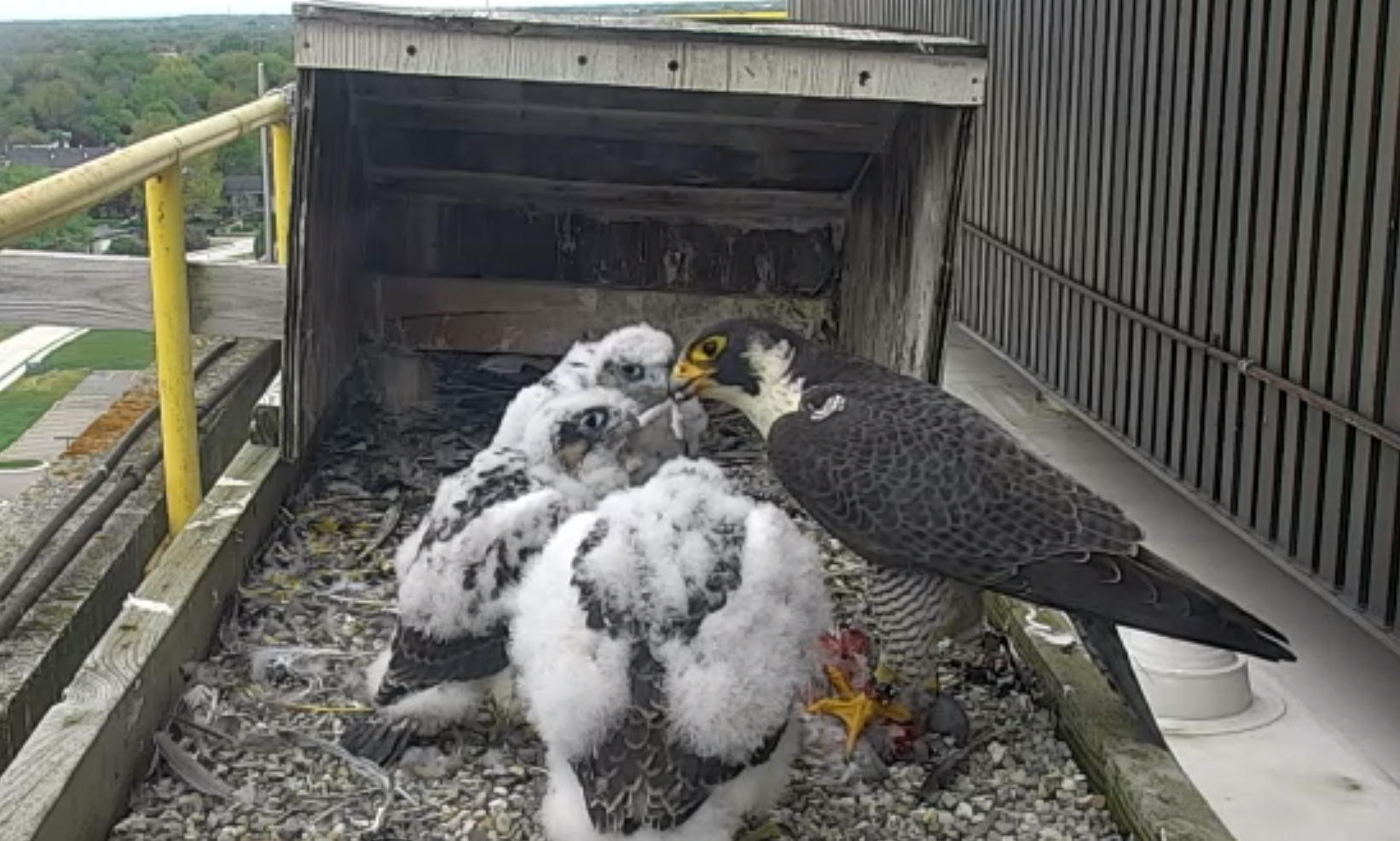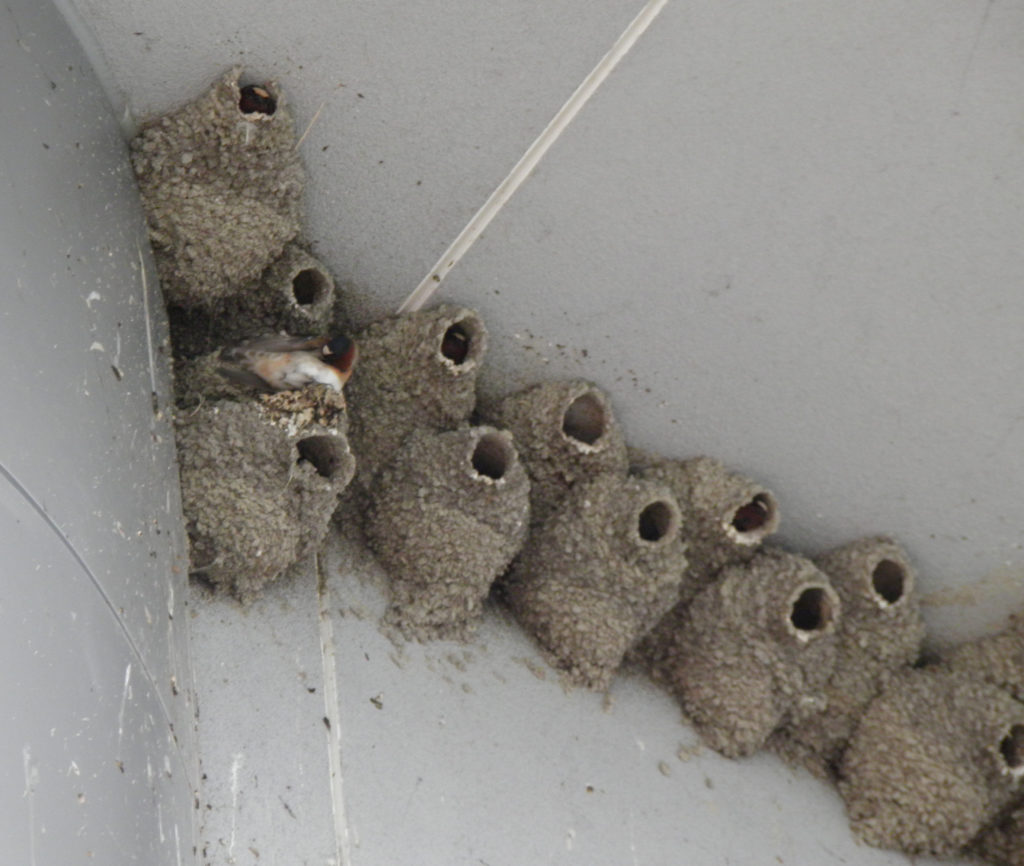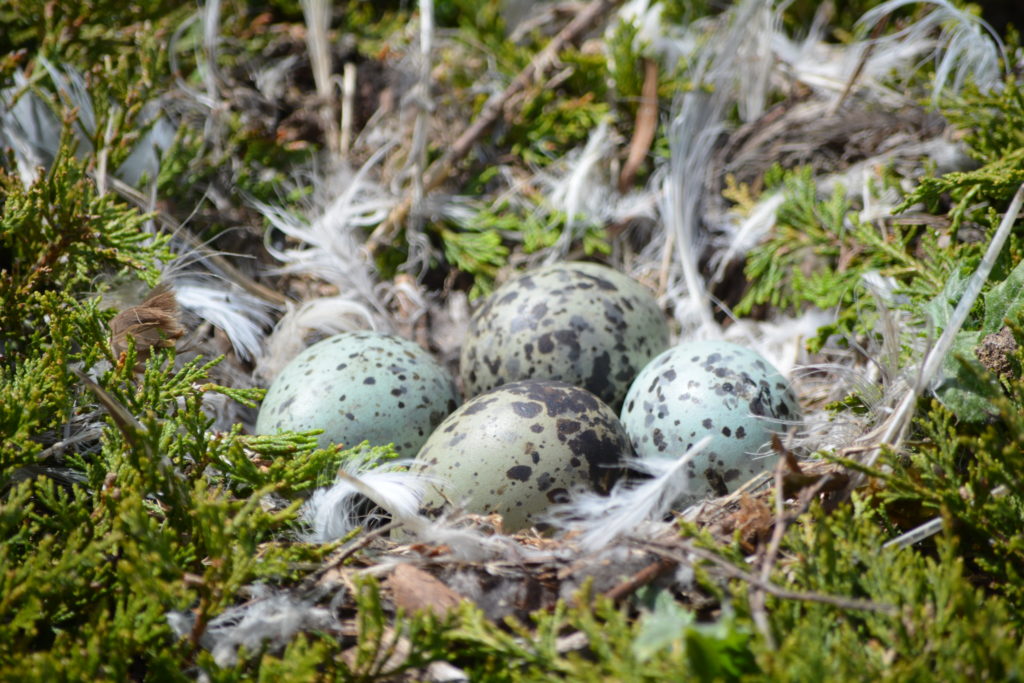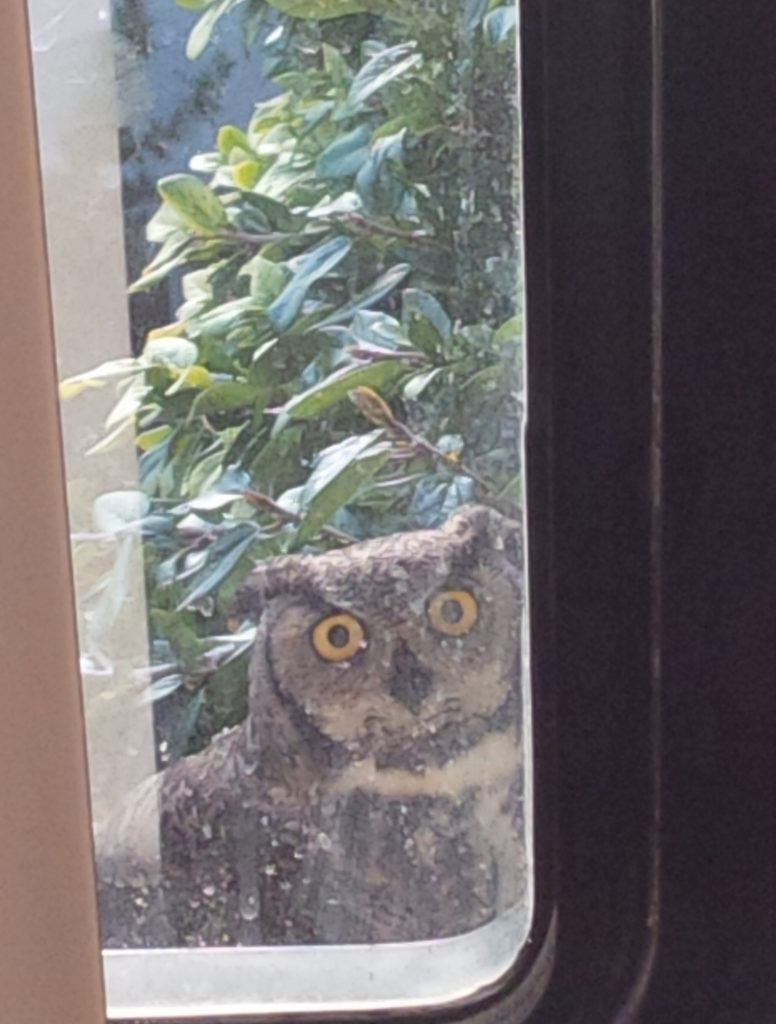 Photo ©
GM Global Technical Center
Photo ©
GM Global Technical Center
by Robyn Bailey, NestWatch Project Leader
The worldwide coronavirus pandemic has changed what it means to go to work, leaving some of us to work from home, some retiring early, and some with a gap in employment. It’s a very difficult time to think about work-life balance, and yet, this year has also seen a rise in birdwatching and nature observation because of the number of people now watching birds from home. In many ways, the steadfast seasonal rhythms of bird life are a comfort in an unpredictable world. As Jon Kauffman of Shaver’s Creek Environmental Center puts it, “Given the situation throughout the globe, monitoring nests this spring has helped me and our community in working through these changing times. When out in the field or observing nesting behavior, I often feel that nothing has changed.” As companies slowly reopen and work to make their facilities safe for their staff, they can also consider making their properties safer for wildlife in the long term.
Certified Workplaces

Office Mates
Paul Messing reports that each summer, more than 100 Cliff Swallows return to nest on the side of the General Motors Technical Center building in Warren, Michigan. The General Motors Technical Center is both a NestWatch Chapter and a Wildlife Habitat Council Conservation Certification workplace.
Many commercial workplaces have voluntarily committed to preserving habitat for local species of conservation concern, and the Wildlife Habitat Council is a nonprofit organization that works to certify these private lands under their Conservation Certification® program. Until recently however, no one had attempted to quantify the amount of habitat protected by this corporate conservation certification. A team of researchers recently made the effort to quantify the impact of such a program, and it was surprising to learn how often nest boxes, and nest monitoring, came into practice.
As of 2015, there were 679 sites holding this certification. The median size of the area managed for wildlife was about 20-30 hectares (about 50-75 acres) although some properties were much larger or much smaller (Ireland et al. 2019). According to the report by Ireland and colleagues, avian conservation projects were the most common, especially those involving the installation of artificial nesting structures. Pollinator plantings and invasive species management were also popular. By implementing these conservation actions, corporations lay the groundwork for participation in citizen science, which in turn can provide meaningful data that can be used as a tool to measure their success. Citizen science is also a great way to involve employees who may not be trained as professional biologists.
The study highlights two corporate campuses that were actively using our NestWatch project to quantify their avian nesting success in nest boxes. One of these was known to us (we previously featured Bacardi Bottling Corporation in Florida) and the other was new to us (Fidelity Investments of Smithfield, Rhode Island). Whereas many conservation successes are challenging to document, NestWatch provides a straightforward, fun way to quantify an indicator of success. Ornithologists have long recognized that the mere presence of birds does not always mean the habitat is actually suitable, and that nesting success can be a better indicator of habitat quality (Van Horn, 1983). NestWatch can therefore provide relatively low-hanging fruit when it comes to measuring your corporation’s stewardship impact.
Working With Wildlife

Well Spotted
A coworker pointed out this Ring-billed Gull nest to Paul Messing, who reports on the Center's nests for NestWatch. All nests, not just those in boxes, are important.
The General Motors Global Technical Center in Warren, Michigan is a preeminent innovation center for automotive engineering, design, and advanced technology; it is also one of our NestWatch Chapters. The 710-acre campus, which opened in 1956, has a long history with supporting biodiversity as well. The site was first recognized by the Wildlife Habitat Council in 2005 for its ‘Wildlife at Work’ program. Since then, the Tech Center has maintained certification biannually. In 2018 the site was recognized as a Gold Tier program, the highest level of certification possible, with 26 documented programs to promote habitats, species, community engagement and education programs. The largest of these are the Avian Species and Falcon programs, led by Paul Messing, Kim Morse-Harvey, and Mo Long. To date, the team has identified over 140 species of birds at the campus, including a variety of songbirds, Eastern Screech-Owls, Wood Ducks, as well as nesting pairs of Peregrine Falcons and Red-tailed Hawks. The many sightings are inspiration to wildlife photographers like Mo, who explained how he became involved: “There are not too many places where you can go out on your lunch hour and see deer, hawks, and falcons. It’s really amazing stuff.” The public can check out the nesting falcons and three fledglings on GM’s Falcon Cam.
Getting Back to [New] Normal

Who's Monitoring Whom?
Alia Partida opened a seldom-used window blind at work to find this Great Horned Owl staring back from the nest. Nesting birds can be found near all kinds of workplaces.
As businesses reopen across the country, keep an eye out for nests that were made in your absence. Check those undriven fleet vehicles, unopened patio umbrellas, unused child play structures, and unsold nursery plants for nests that were made when the world was quieter. And if birds have captured your interest, perhaps you can join your company’s sustainability/green committee and advocate for bird-friendly practices like native plantings, collision-reducing glass, and nest boxes or other nesting structures. These would make great first steps towards a certification. When things get “back to normal” (however that looks), they don’t have to be business as usual. Now, more than ever, is the time to bring the health and wellness benefits of nature into our workplaces.
References:
- Ireland, A. W., L. J. Napoli, K. A. Basiotis, E. J. Voldstad, and K. Ostovar. 2019. Potential conservation benefits of a voluntary corporate certification program. Environment, Development and Sustainability 22(5): 4889–4905.
- Van Horne, B. 1983. Density as a misleading indicator of habitat quality. Journal of Wildlife Management 47: 893–901.
Leave a Reply